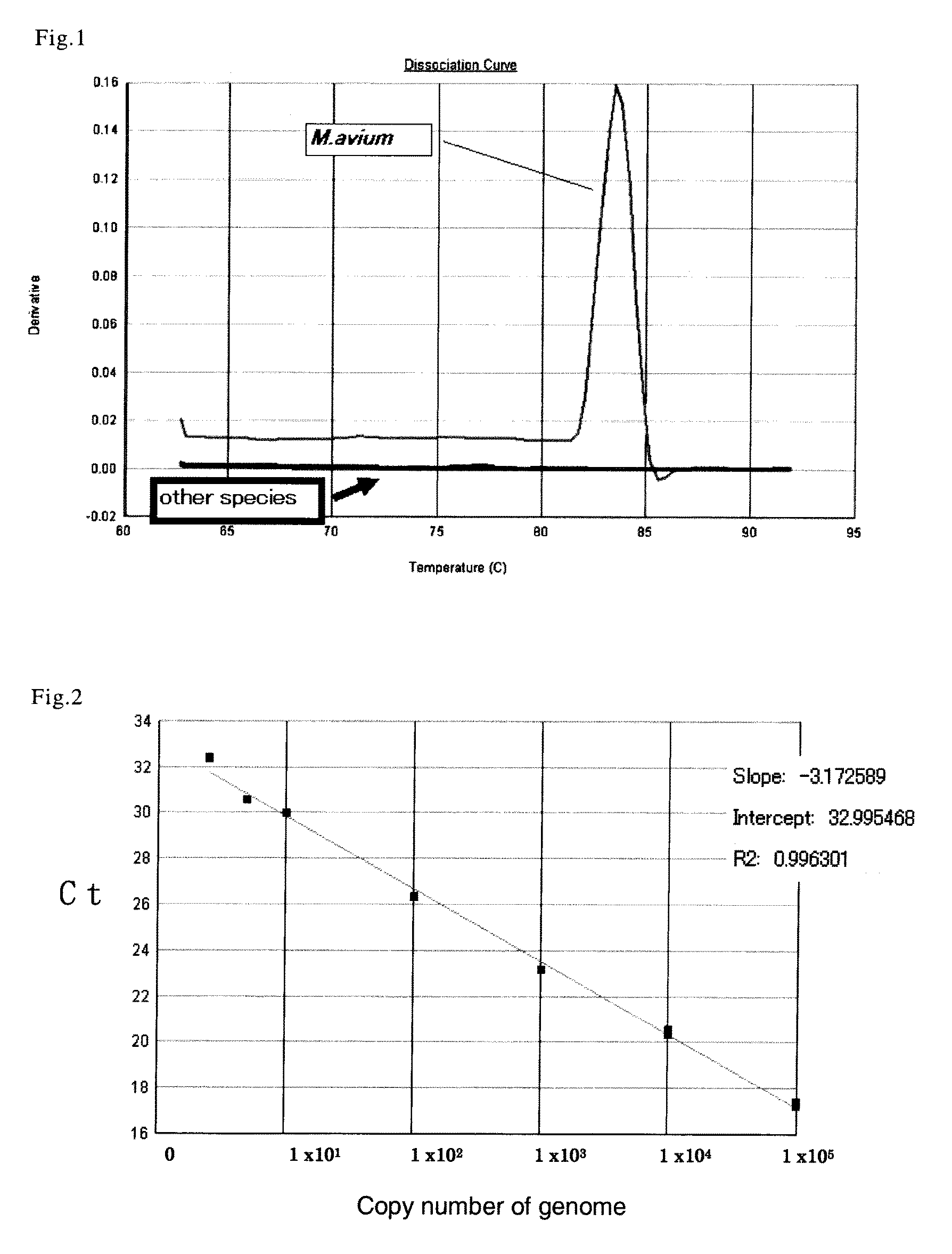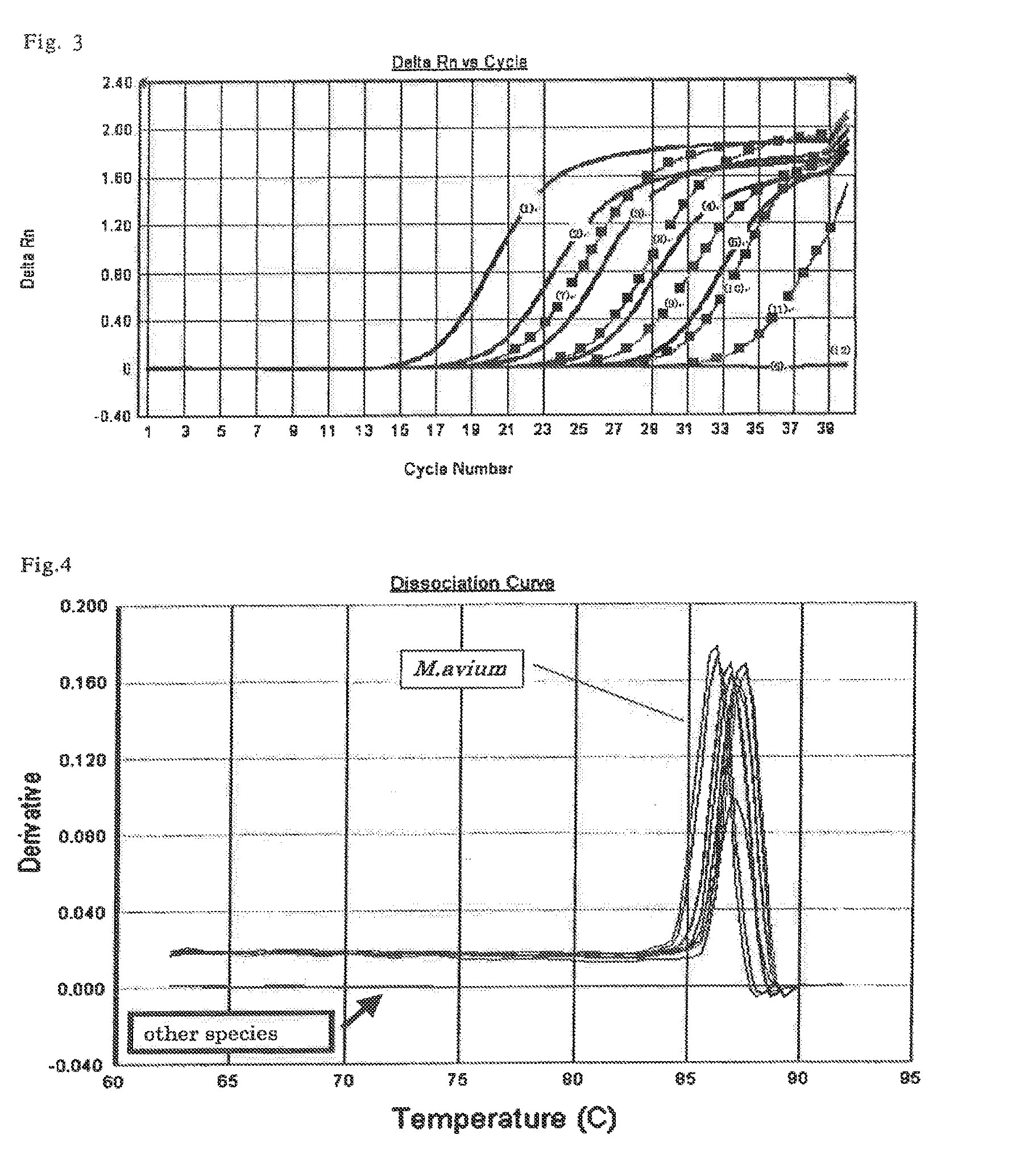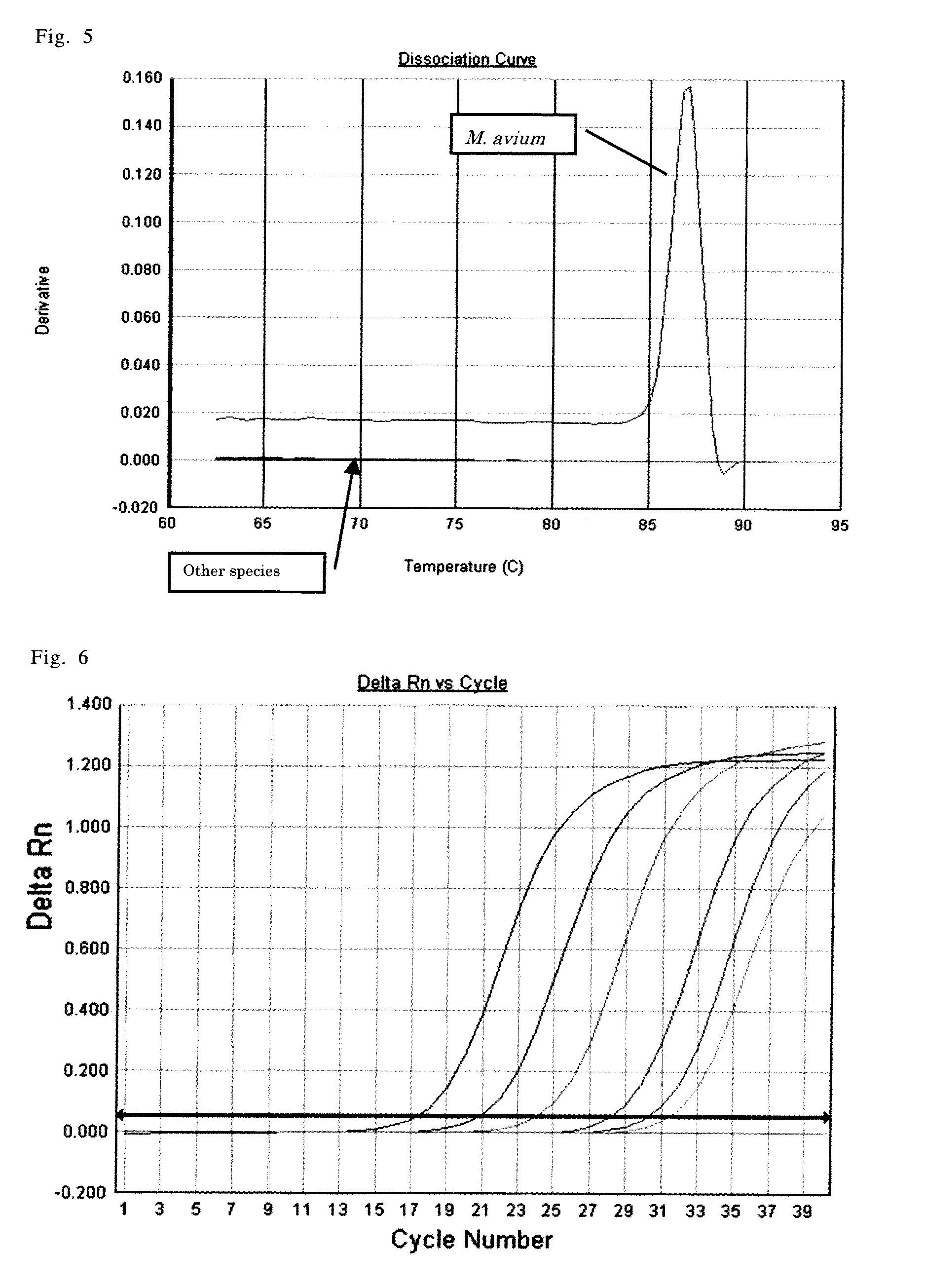Primer and probe for detection of Mycobacterium avium and method for detection of Mycobacterium avium by using the primer or probe
a technology of mycobacterium avium and primer, which is applied in the field of primer and probe method for detection of i>mycobacterium avium /i> by using the primer or probe, can solve the problems of difficult to differentiate tuberculosis from non-tuberculous i>mycobacterium, and the infectivity of exerting human infection,
- Summary
- Abstract
- Description
- Claims
- Application Information
AI Technical Summary
Benefits of technology
Problems solved by technology
Method used
Image
Examples
example
Example 1
Selection of Clone Derived from M. Avium Genome 1
(1) Preparation of DNA Sample Derived from M. Avium
[0317]Highly purified genomic DNA derived from Mycobacterium avium TMC16741 strain was obtained from Mycos Research LLC (USA).
[0318]Using 1 to 10 ng of obtained genomic DNA sample derived from M. avium as a material (template), and using Genomiphi V2 DNA Amplification Kit (produced by GE Healthcare Bio-Science AB), whole genome amplification reaction was carried out, and obtained 100 μg or more of amplification product. This amplification product was used as a “purified genomic DNA derived from M. avium” for the following experiments. It should be noted that, purity of the obtained genomic DNA derived from M. avium was confirmed to be good in absorbance measurement level.
[0319]In addition, this purified genomic DNA derived from M. avium was adjusted to give final concentration of 400 ng / μl (in 10 mM Tris-HCl buffer, pH 8.9), and used as “DNA sample derived from M. avium”.
(2...
example 2
Specificity Evaluation of the Candidate Clone 13 for M. Avium
(1) Synthesis of the Primer of the Present Invention
[0359]Firstly, among the candidate 24 clones determined in the above-described Example 1, based on the result of sequence (nucleotide sequence) analysis of the candidate clone 13, from the candidate sequence 13, primer sequence for use in the PCR, namely, “5′-AAGGCTCATGGCTACCAAGTC-3′” (SEQ ID NO:14; hereinafter referred to as 12Fw_1), and “5′-TGGCCGAGTTCGTGATTCT-3′” (SEQ ID NO:15; hereinafter referred to as 12Rv_1) were designed using a primer design tool on the web, Primer 3 (Whitehead Institute for Biomedical Research).
[0360]It should be noted that, nucleotide sequence of the candidate clone 13 obtained from the result of sequence analysis is the one shown in SEQ ID NO:4. In addition, its clone ID number was numbered as R11_2d (named by the present inventor).
[0361]Next, the designed oligonucleotide was synthesized by the phosphoramidite method using ABI 392 DNA synthes...
example 3
Evaluation of M. Avium Specificity of the Other Candidate Clone 1
(1) Synthesis of the Primer of the Present Invention
[0381]Among 24 candidate clones determined in Example 1, based on the result of sequence (nucleotide sequence) analysis of the candidate clone 08, the primer sequence for use in the PCR, namely, “5′-cattgtgcgctgcttatgac-3” (SEQ ID NO:6; hereinafter referred to as 003Fw_1) and “5′-gaagtgaatcggccttgct-3” (SEQ ID NO:7; hereinafter referred to as 003Rv_1) were designed from the candidate sequence 08 using a primer design tool on the web, Primer 3 (Whitehead Institute for Biomedical Research).
[0382]It should be noted that, the nucleotide sequence of the candidate clone 08 obtained from the result of sequence analysis is the nucleotide sequence shown in SEQ ID NO:1. In addition, the clone ID number was given as R07_12q.
[0383]Next, the designed oligonucleotide was synthesized and purified using the same equipment and by the same method as used in (1) of Example 2. This synth...
PUM
| Property | Measurement | Unit |
|---|---|---|
| time | aaaaa | aaaaa |
| temperature | aaaaa | aaaaa |
| pressure | aaaaa | aaaaa |
Abstract
Description
Claims
Application Information
 Login to View More
Login to View More - R&D
- Intellectual Property
- Life Sciences
- Materials
- Tech Scout
- Unparalleled Data Quality
- Higher Quality Content
- 60% Fewer Hallucinations
Browse by: Latest US Patents, China's latest patents, Technical Efficacy Thesaurus, Application Domain, Technology Topic, Popular Technical Reports.
© 2025 PatSnap. All rights reserved.Legal|Privacy policy|Modern Slavery Act Transparency Statement|Sitemap|About US| Contact US: help@patsnap.com



